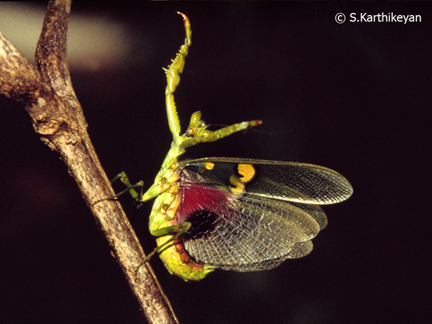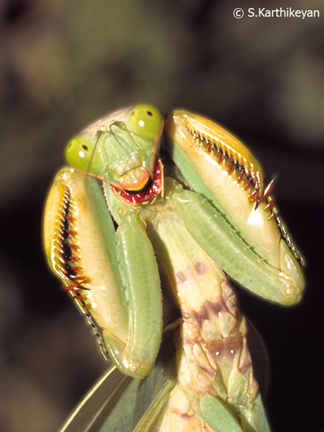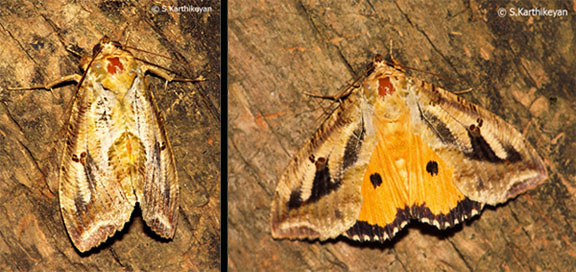One evening, through the window came flying in a green coloured insect and settled on the sofa in the living room of our home. At first sight I recognised it as a praying mantis. It was overall a rich green with a bright yellow circular patch on the forewing. I wanted to photograph this praying mantis. So, quickly got my camera out. And, I gently picked the praying mantis in one hand and used the other to cover it so that I could take it into my garden for a photography session.
When I transferred it to a twig, it suddenly opened its wings and exposed the bright pink on the base of the hind wing while simultaneously putting up its “praying legs” and making itself look big – this would have startled an unsuspecting predator. This threat display of this mantis did not have the desired impact on me but it definitely surprised me and I got more than what I bargained for. I managed to capture this moment on film before this wonderful little insect decided to wing its way to freedom!

On another occasion while exploring my garden, I stumbled upon a light green praying mantis beautifully camouflaged in its surroundings. Out came the camera and I was trying to get as close as the lens would permit. I was slowly maneuvering myself into position, when I noticed the mantis rearing up and displaying the red lips and simultaneously moving its first pair of legs apart. The otherwise slender thorax now looked broad and the spines on the first pair of legs threatening. In this stance, the praying mantis looked formidable indeed.

The fruit-sucking moth is another example of this behaviour. This moth, when sitting in a normal resting position, is beautifully camouflaged with its background. If a predator gets past this camouflage and attacks the moth, it opens the forewings and reveals a pair of brightly coloured eyespots on the hind wings. This can startle a potential predator!

Threat displays and startling displays are used by a lot of organisms. The above are just two examples of how organisms use colours to their advantage. If curiosity gets the better of us, we will stumble upon several such examples even in our immediate environment.